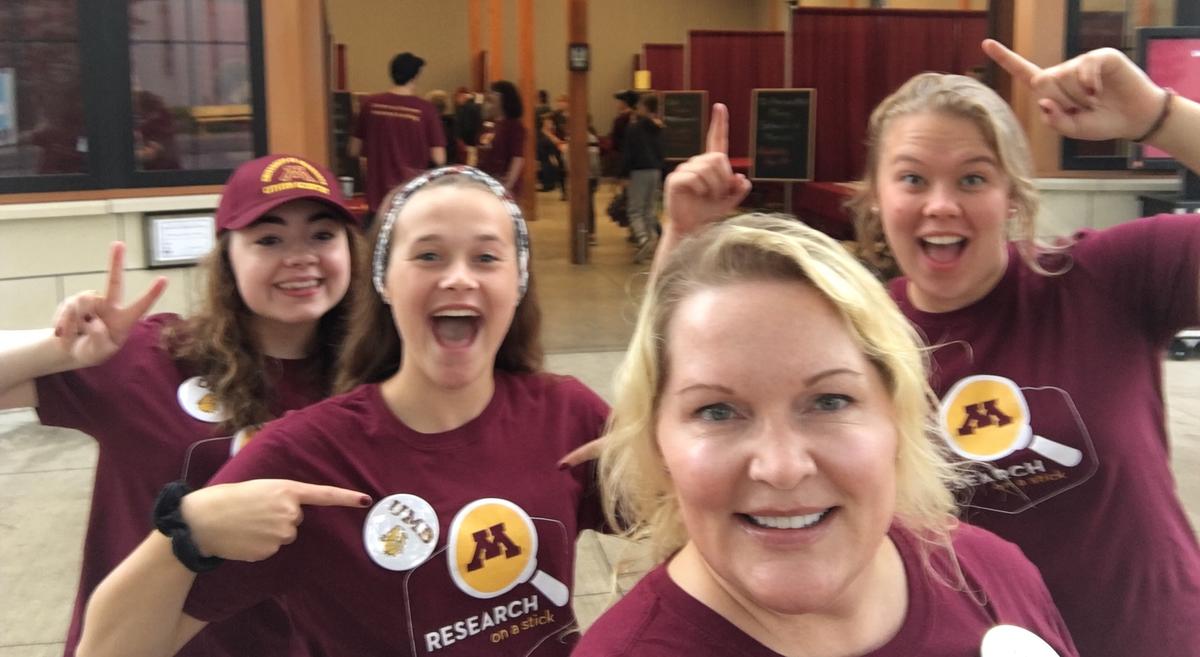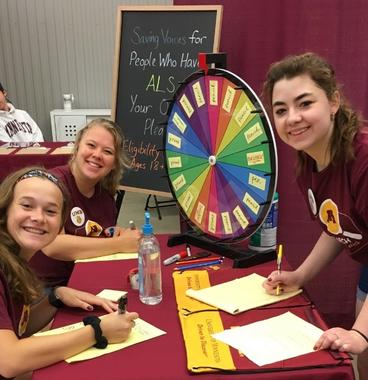Hot, humid Minnesota air filled the room, and a line of research participants stretched far beyond the door. Dr. Jolene Hyppa Martin and her three Communication Science and Disorders students gathered in the Driven to Discover Research Building (D2D) at the Minnesota State Fair. Over the next three days, they spent over 24 hours working to advance speech aid technology.
Students Jaclyn Friese, Sabrina Salmela, and Meaghan O'Connor
Jolene had organized a study that would compare two ways of synthesizing customized voices for individuals who have ALS (Lou Gehrig's disease). There was an immediate purpose for the results of Jolene's State Fair study. The current process takes over ten hours and can be taxing on patients. The UMD group wanted to reduce the amount of time and labor required to create and bank synthetic voices that sound natural and intelligible.
The weekend was hectic. The line outside continued to grow as participants bustled in and out of the D2D building to take part in the study. The research team worked long hours throughout their days at the busy fair. Jolene hoped to gather 240 volunteer participants. "We learned that many people specifically sought out our study because of a family member diagnosed with ALS," Jolene said. "They wanted to contribute to this research. In the end, we recruited more than 30 participants per hour for a total of 886 participants!"
The room was always warm, but Jolene said, "It was absolutely beyond our wildest dreams. The entire project at the State Fair was a lot of fun and a huge success." This study may turn out to be a crucial step toward making voices for the voiceless more painless.
About the Communication Sciences and Disorders program
Above: Meaghan O'Connor, Jaclyn Friese, Dr. Jolene Hyppa Martin, and Sabrina Salmela at the Minnesota State Fair in August 2018.

